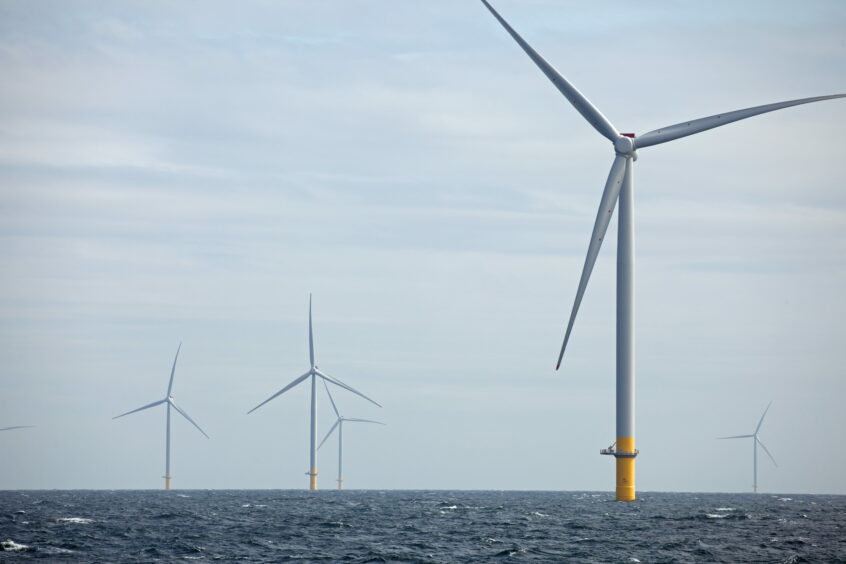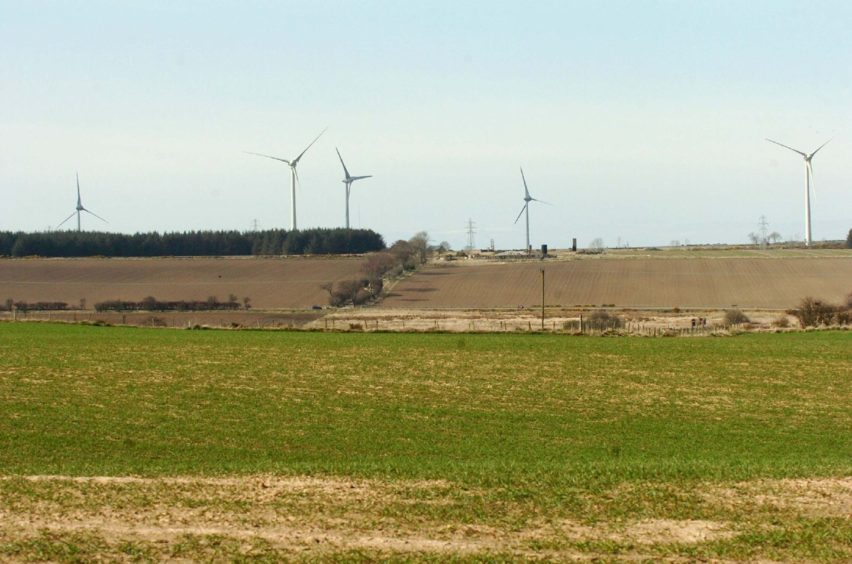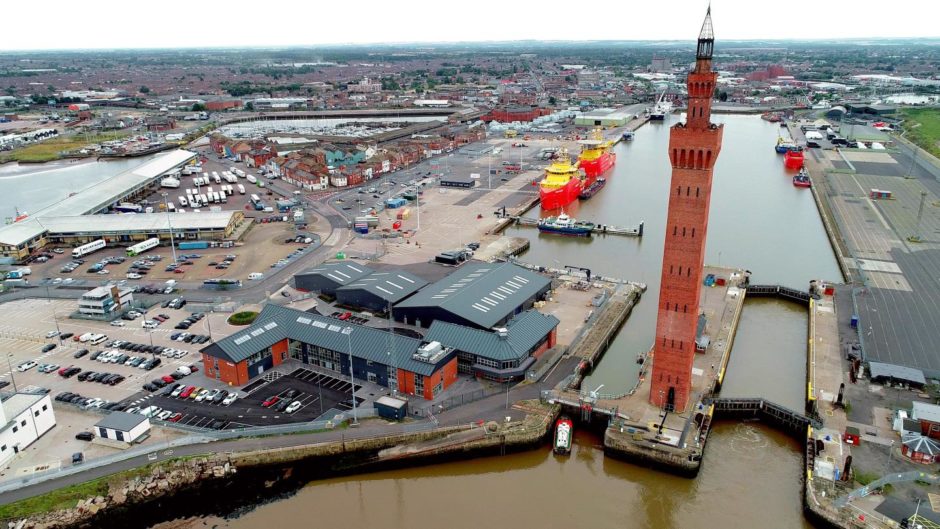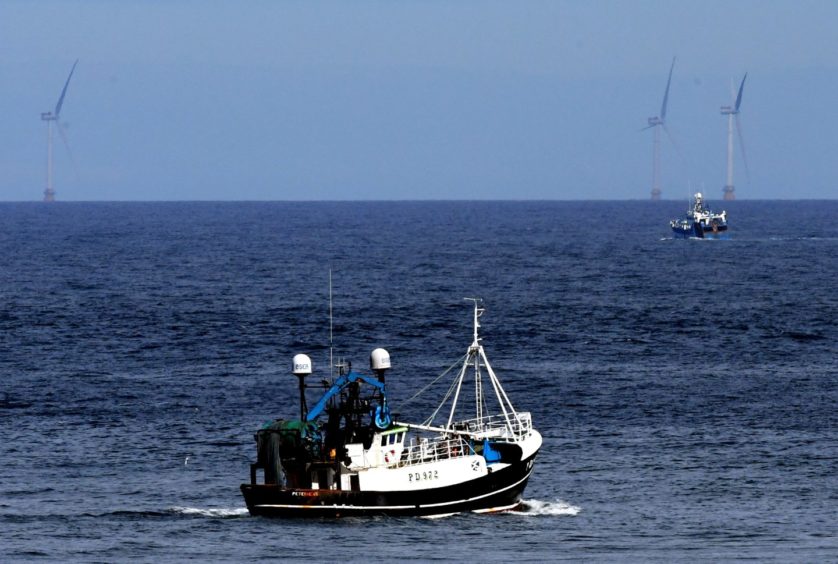
The latest renewable energy consortium to announce its intention to bid for a slice of Scottish offshore wind farm action is made up of companies from Denmark, Italy and Spain.
The three firms aim to unlock the potential of floating wind technology through the upcoming ScotWind leasing round.
Denmark’s Orsted, Italy’s Falck Renewables and Spain’s BlueFloat Energy – coincidentally representing three of the four countries that reached the semi-finals of the Euro 2020 football tournament – have thrown their hat in the ring as Crown Estate Scotland prepares to carve up parts of the North Sea for wind farm developments.
The consortium is targeting seabed leases for sites that lend themselves to the deployment of large-scale floating wind technology, a spokeswoman for the partnership said.
Falck Renewables has been active in the UK since 2002. It has 10 wind farms around Scotland, from Kilbraur, in Sutherland, to Assel Valley, in South Ayrshire, and operational headquarters in Inverness.
The Milan-based firm pioneered a co-operative ownership approach to wind farm development at its Boyndie site, near Banff. Co-operatives now own stakes in seven of its wind farms.
Falck Renewables UK managing director Richard Dibley said: “Falck Renewables is committed to taking an active role in the development of floating offshore wind projects, as we are convinced the technology will play a crucial role in helping to reach Scotland’s net-zero goals.
“Orsted’s hands-on approach to working with local communities is a great fit with our more than 15 years of experience working in Scotland to develop projects which share their economic benefit as widely as possible with local people.
“We are excited about the opportunities this partnership will offer Scottish communities and the supply chain.”
Orsted, headquartered in Fredericia, on Denmark’s Jutland peninsula, claims to have developed and built more offshore wind projects than any other company in the world.
‘Exciting and rapidly developing new technology’
Martin Neubert, chief commercial officer, Orsted, said: “We recently announced our strategic decision to pursue floating wind opportunities and to drive the commercialisation of this technology.
“Today’s announcement reaffirms Orsted’s commitment to this exciting and rapidly developing new technology.
“Allying our strong in-house development, EPC (engineering, procurement, and construction) and O&M (operations and maintenance) capabilities with partners that have unique hands-on experience in floating wind projects and a strong local presence in Scotland will enable us to deliver an exciting new proposition for Scotland.”
Duncan Clark, head of region, UK, Orsted, added: “We have seen the positive, transformative impact of Orsted’s offshore wind farms in providing clean, cheap energy for homes and businesses, investing in our supply chain and opening access to opportunities across the globe – and creating new jobs and skills that leave a lasting legacy. This success is something we are very keen to replicate in Scotland.
“The ScotWind leasing round is a crucial step in the Scottish Government’s plan to deliver up to 11 GW (gigawatts) of offshore wind capacity by 2030 and will be pivotal to a truly green recovery from the Covid-19 pandemic.”
‘Winning’ consortium
Carlos Martin, chief executive of Madrid-based BlueFloat, said: “Announcing our partnership with Orsted strengthens BlueFloat Energy’s position in the floating wind market, since it endorses our value proposition as a technology-neutral expert with a decade of unique experience and knowledge in developing floating wind projects.
“It reinforces our capabilities and creates a winning consortium for a very competitive ScotWind leasing round.”
What exactly is floating wind energy technology?
Unlike more traditional bottom-fixed offshore wind technology, where the turbine is mounted on top of a structure fixed to the seabed, floating wind projects use a floating foundation anchored to the seabed by mooring lines, allowing projects to be sited in deeper waters further away from the coast.
The tether stops it from drifting off into a beach or shipping lane.
Hywind Scotland, Equinor’s pioneering development about 18 miles off the coast of Peterhead, was the world’s first commercial wind farm using floating wind turbines.
BlueFloat boasts some of the most extensive knowledge and hands-on experience in executing floating offshore wind schemes of any project developer in the world.
Founded by a team of floating offshore wind experts and now backed by 547 Energy, the renewable energy investment platform of US-based, clean energy-focused private equity firm Quantum Energy Partners, the company’s projects include EDP’s WindFloat Atlantic wind farm, off the Portuguese coast.
WindFloat is believed to be the first floating offshore wind scheme worldwide to secure project finance.
John Pearson – A new dawn for Scotland’s energy industry
New green energy ‘global centre of excellence’ taking shape on the Cromarty Firth
Recommended for you




